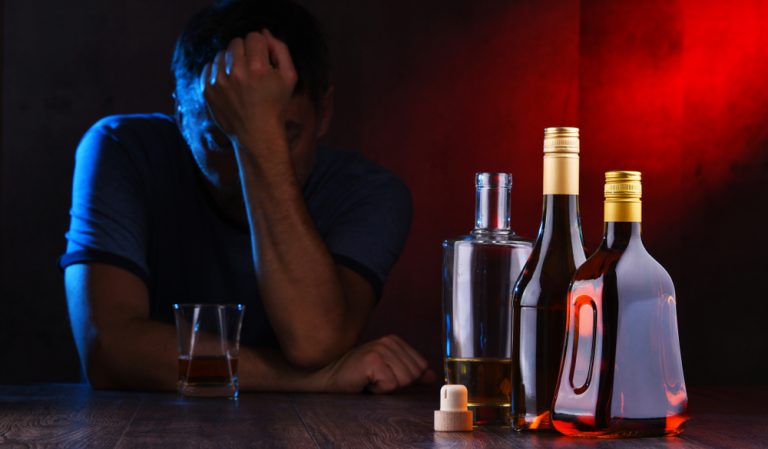Content
NHTSA strongly supports the expansion of ignition interlocks as a proven technology that keeps drunk drivers from getting behind the wheel. The and 45-to-49 age groups had the highest percent, 35%, of drunk motorcycle riders killed in 2021. Motorcycle operators involved in fatal crashes were found to have the highest percentage (28%) of alcohol-impaired drivers than any other vehicle types. In 2021, 5,932 people operating a motorcycle were killed in traffic crashes.

Of those motorcycle riders, 1,624 (29%) were drunk (BAC of .08 g/dL or higher). In 2021, the highest percentage of drunk drivers (with BACs of .08 g/dL or higher) were the 21-to 24-year-old age group and 25-to-34-year old age groups. Men are most likely to be involved in this type of crash, with four male drunk drivers for every female drunk driver.
Symptoms and Causes
Alcohol use tends to begin in the late teens or early twenties, peak in the middle and late twenties, and slow by the early thirties. Individuals in their early to mid-twenties are the most likely to abuse alcohol and suffer from alcohol use disorders. The younger that an individual starts consuming alcohol, the more likely they are to develop alcoholism later in life. This is especially true of individuals who start drinking before 15. When drinking is acceptable or encouraged, alcohol abuse disorders are more likely to develop. Perhaps the most commonly cited example is college, where alcohol consumption is widely celebrated and embraced; even particularly dangerous forms of drinking such as binge drinking are glorified.

A first-time offense can cost the driver upwards of $10,000 in fines and legal fees. When it comes to drunk driving, it affects more than just the driver. In 2021, among children (14 and younger) killed in motor vehicle crashes, 25% were killed in drunk-driving crashes. Of those deaths, more http://novorossiia.ru/people-who-want-organ-transplants-must-get-the-covid-19-vaccine-a-hospital-says.html than half the time (55%) the child killed was in the vehicle driven by the drunk driver. Seeing a doctor as soon as possible helps ensure appropriate treatment and can reduce the risk of complications. The right treatment option for kidney pain related to alcohol depends on the cause.
What are the risk factors?
Your culture, religion, family and work influence many of your behaviors, including drinking. Family plays the biggest role in a person’s likelihood of developing alcoholism. Children who are exposed to alcohol abuse from an early age are more at risk of falling into a dangerous drinking pattern. The mental health problems that most commonly co-occur with substance abuse are depression, bipolar disorder, and anxiety disorders. Over time, heavy drinking can cause inflammation (hepatitis) and heavy scarring (cirrhosis) in the liver.
Folate is a vitamin that cells in the body need to stay healthy. Absorption of nutrients can be even worse in heavy drinkers, who often consume low levels of folate to begin with. Low folate levels may play a role in the risk of some cancers, such as breast and colorectal cancer. For each of these cancers, the more alcohol you drink, the higher your cancer risk. But for some types of cancer, most notably breast cancer, consuming even small amounts of alcohol can increase risk.
What is moderate drinking?
The kidneys help filter the blood, including by filtering out harmful substances such as alcohol. Moderate drinking should not cause kidney pain, but binge drinking or frequent drinking may cause kidney problems. A small percentage of adults who drink account for half of the 35 billion total drinks consumed by US adults each year. CDC estimates that 1 in 6 US adults binge drinks [PDF – 171 KB], with 25% doing so at least weekly, on average, and 25% consuming at least 8 drinks during a binge occasion.
- A person’s risk of alcohol-related cancers is influenced by their genes, specifically the genes that encode enzymes involved in metabolizing (breaking down) alcohol (27).
- Alcohol consumption can have an impact not only on the incidence of diseases, injuries and other health conditions, but also on their outcomes and how these evolve over time.
- There are some cases during cancer treatment in which alcohol clearly should be avoided.
Your doctor may suggest a medicine to help treat your alcohol use disorder. Medicines are usually used together with talk therapy and support groups. Other things, such as having low self-esteem or being impulsive, may raise the risk of alcohol use disorder. The signs http://rolker.ru/j/content/view/80/91/ of an alcohol overdose can include confusion, vomiting, seizures, slow/irregular breathing, blue-tinged skin or pale skin, hypothermia, and unconsciousness. If someone who has been drinking begins exhibiting these symptoms, seek emergency medical attention.
Psychologists can also provide marital, family, and group therapies, which often are helpful for repairing interpersonal relationships and for resolving problem drinking over the long term. Family relationships influence drinking behavior, and these relationships often change during an individual’s recovery. People with alcohol use disorders drink to excess, endangering both themselves and others.
The American Psychological Association gratefully acknowledge the assistance of Peter E. Nathan, PhD, John Wallace, PhD, Joan Zweben, PhD, and A. We may receive advertising fees if you follow links to promoted websites. The National Council on Alcoholism and Drug Dependence and AlcoholScreening.org offer more comprehensive self-tests.

